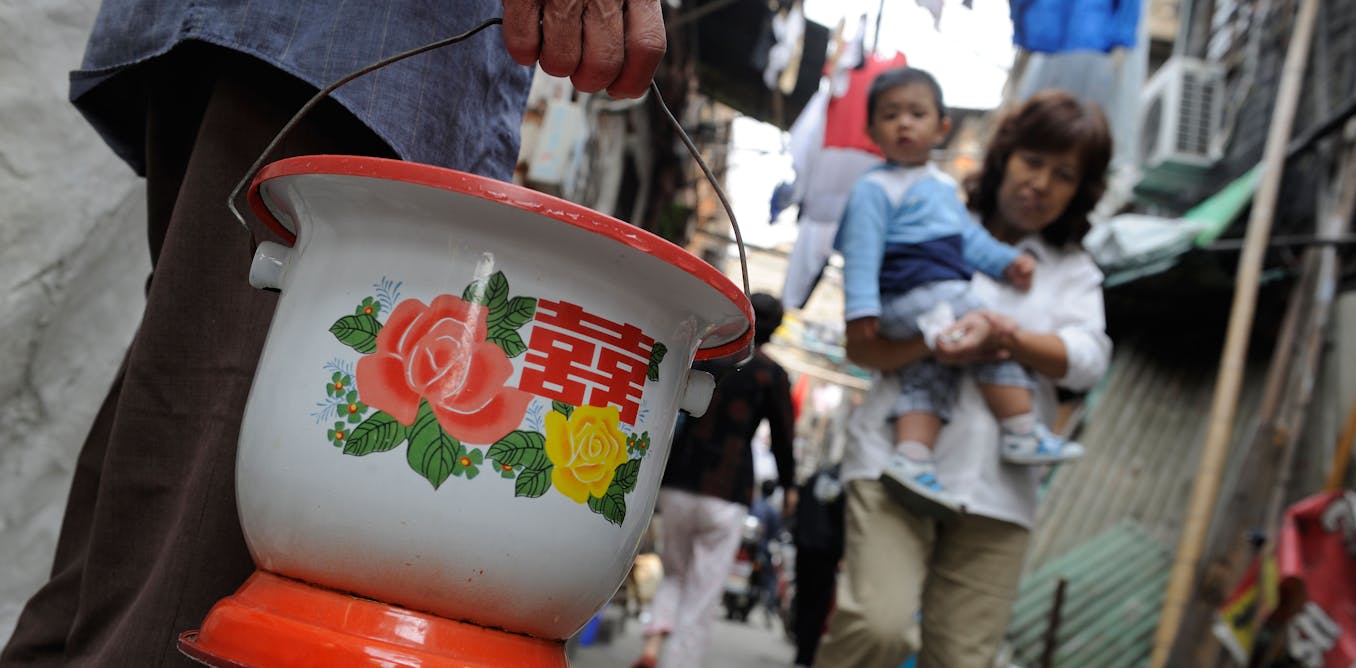by DELJANA IOSSIFOVA & QI LIU

Urbanisation in China tends to be depicted in terms of towering skyscrapers and multilane highways – the city reaching upwards and outwards. Not much thought is given to the vast, but less eye-catching, urban infrastructure that shapes and is shaped by the everyday lives of its citizens – such as toilets and sewers.
Until as late as the 2010s, chamber pots were still a common feature of urban life in China. Families shared wooden matong buckets or enamel tanyu, and emptied them at communal disposal sites. The waste thus collected was transported to suburban and rural areas for agricultural use.
In 2015, President Xi Jinping launched the nationwide toilet revolution. By 2020, city councils had added 68,000 more public toilets; by the end of 2022, 73% of rural residents reportedly had access to flush toilets.
But, as research has long shown, urban development and access to the modern sanitation it brings is unequal. When a poorer neighbourhood is slated for redevelopment, indoor plumbing is often not considered a priority.
The Conversation for more
